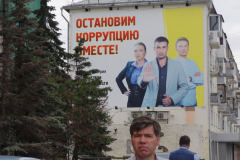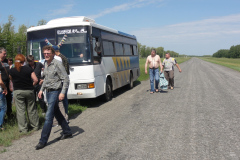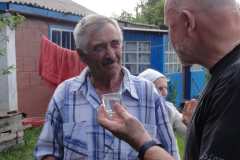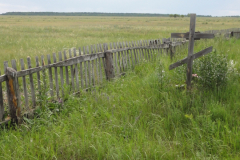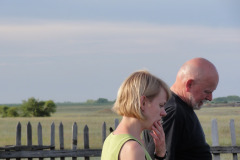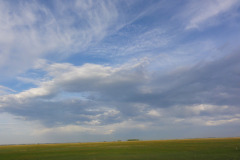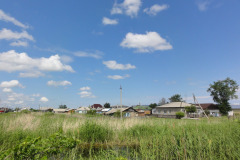First, the background information: on June 14, 1941, more than 14,000 people were forcibly deported by Stalin’s regime from Latvia to Russia – families were separated, the men sent to hard labor camps, women and children sent to work and fend for themselves on the Siberian taiga and tundra. Teachers, doctors, government workers, members of the Latvian national guard, active members of their communities – these were their only “crimes”. The vast majority of the men died of hunger, illness, exposure, and/or were sentenced to death as “enemies of the state” and shot. Far too many of the women and children died as well, of the same causes. Another 40,000+ people were deported eight years later in a second round of deportations by the Soviet regime.
Since 2000 Dzintra Geka, a well-known documentary filmmaker in Latvia, has been interviewing, making films, and publishing books about the children who were among the deported in 1941/1949 and managed to survive and return to Latvia (some as late as 1977). I have done a considerable amount of translation work for Geka, and although translating the life stories of deportees is emotionally difficult, they moved me tremendously and have stayed with me. So much so that I’ve contracted a case of “Siberian fever”…
Geka has made regular trips to places in Russia and Siberia where deportees lived. Some of the child deportees – now in their 70s and 80s – and their descendants have joined Geka and her film crew on these trips. And I, of course, jumped at the opportunity to join them this summer, too. This year’s trip focused on Solikamsk (Usollag) and Lesnoy (Vyatlag), the sites of two notorious men’s hard labor camps, where hundreds of Latvian men – including the fathers and grandfathers of our group’s participants – suffered and died.
The goal of Geka’s trips is not politically provocative. Rather, the goal is to document these places and stories on film; set up memorial plaques; consecrate grave sites; form contacts with local authorities and historians; gain access to archived materials, such as court documents and death certificates; and possibly, just maybe, influence a change in Russian attitudes towards their history. The trips also provide a bit of closure for those personally affected by deportations and exile. Access to archives was, however, denied to us at the last minute. Russian authorities have once again closed their archives and there is valid reason to believe that the files will soon be destroyed, leaving the deportees and their families with many unanswered questions.
That said, our trip also included plenty of tourism off the beaten path. I sat back and enjoyed the arguable luxury of traveling with a group and not having to plan accommodations, transportation, or even meals myself.
Our group of almost 30 people started out in Omsk in western Siberia and over the course of eleven days traveled by crowded, stuffy bus on bumpy two-lane roads westwards through Yekaterinburg to Solikamsk to the forests of northern Kirov Oblast to Kirov itself, and finally to Moscow. We visited small villages near the Kazakhstan border, saw mountains of salt in the Urals, and traveled by motorized draisine to the tick-infested site of a former hard labor camp. But we were also lucky enough to enjoy very civilized accommodations every night, drink smooth home-distilled vodka, and dine with high officials of Kirov Oblast. Not a bad introduction to Russia.
View Russia/Siberia 2011 in a larger map
Visiting Latvia in the 1980s prepared me for the typical shock-value aspects of Russia, although Russia tends to be “one step further”. I have no problem peeing in the bushes and sharing shot glasses with strangers. I also knew my inner vegetarian would be highly compromised.
What did unsettle me, however, were the statues of Lenin still standing in every central square, the main streets still named Lenina and Sovietskaya, and the blatant minders following our group. It’s eerie to realize that little has changed in the country since the dissolution of the Soviet Union. Our group was not permitted access to former labor camp sites in Solikamsk, was refused access to archives, and was forced to listen to the old Soviet propaganda that deportations were necessary for the Soviet Union’s development as a nation. Many Russians are still suspicious of their government, afraid to speak openly, and avoid talking about deportations and repressions if at all possible.
Our minders seemed pleasantly surprised by our group’s peacefulness (touristy-ness?) and tearful testimonies. Upon parting, one guide even managed a quiet “I’m sorry, I didn’t realize…”
Not many tips for travelers in this blog entry. Bring toilet paper. Bring a supply of creamer if you’re a coffee drinker. Don’t avoid roadside cafés, because sometimes their food is quite good. From a tourist’s standpoint, Omsk is a typical post-Soviet city; Yekaterinburg is unexpectedly modern and slick; Kirov is a relatively small, sleepy, architecturally uninteresting but cultured city; and we got a poor introduction to Moscow, so I won’t make any generalizations about it. Solikamsk left the biggest impression on me – its rawness, its Soviet attitude, its old churches, its rosy white-night sky.
For more information, visit Sibīrijas bērni (in Latvian only), deportations (Latvian Institute), and Dzintra Geka at UWSP. Click here for a clip of one of Geka’s films.
Another article about the trip can be found in the September 9, 2011, back issue of the Wright County Journal Press.
